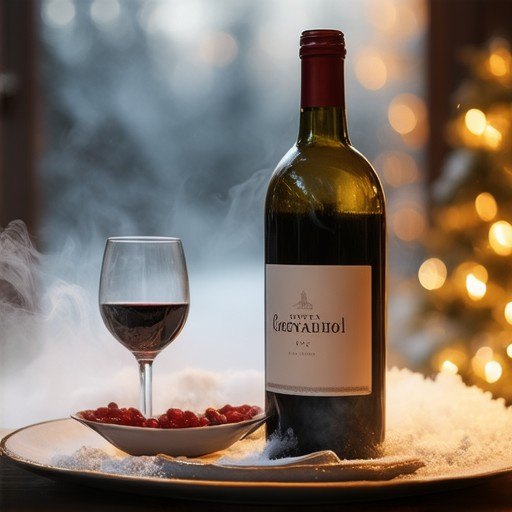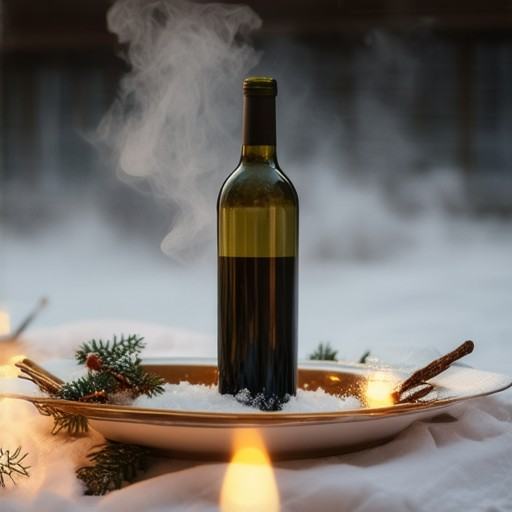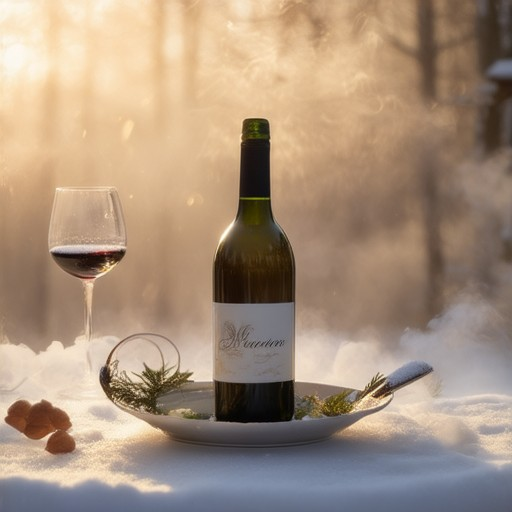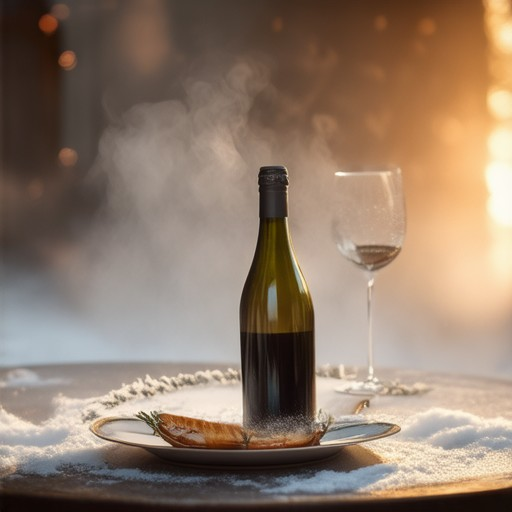Christmas is a time for joy, togetherness, and creating memorable moments. One of the most delightful ways to enhance your holiday celebrations is through the perfect pairing of wine and holiday recipes. Whether you’re hosting a festive gathering, preparing a cozy family dinner, or searching for unique gift ideas, the synergy between wine and food can elevate your Christmas spirit. From classic mulled wine to spiced wine recipes, and from easy holiday recipes to gourmet dishes, this article explores the art of pairing wines with holiday meals to create a seamless and unforgettable experience. Discover how the right wine can complement your favorite Christmas dishes, making your holiday celebrations even more delightful. Get ready to dive into the world of Christmas wine and holiday recipes, where every sip and every bite tells a story of celebration and tradition.
Key Takeaways
– Discover how wine enhances holiday meals with expert pairings for Christmas dishes.
– Explore versatile wine uses in cooking, from risottos and stews to desserts and Asian cuisines.
– Master meat pairings: bold reds for beef and lamb, crisp whites for poultry, and rich reds for pork.
– Extend red wine freshness with proper storage tips, including refrigeration and sealing techniques.
– Elevate your holiday entertaining with curated wine and recipe ideas for every course.

What is a Good Wine for Christmas?
Christmas is a time for celebration, and selecting the perfect wine can elevate your holiday feast. Here are some excellent wine options that pair beautifully with traditional Christmas dishes:
Red Wines
- Malbec: A bold and rich red wine that complements turkey and stuffing with its dark fruit notes. Its smooth texture cuts through the richness of holiday meals.
- Syrah: Known for its peppery flavor, Syrah pairs wonderfully with roasted meats and vegetables, making it a great choice for Christmas dinners.
White Wines
- Pinot Gris: Offers a balanced sweetness and acidity, perfect for pairing with dishes like vinaigrettes and creamy sauces. It adds a refreshing element to the meal.
- Riesling: A crisp and elegant white wine that complements the richness of mashed potatoes and gravy, providing a clean finish to the dish.
Sparkling Wines
- Champagne/Prosecco: Ideal for celebrations, these sparkling wines add a festive touch and pair well with appetizers and desserts. Their effervescence livens up the mood.
- Sparkling Rosé: A sweet and bubbly option that can please those who enjoy a lighter, fruity wine.
Dessert Wines
- Sauternes: A rich, sweet wine that pairs perfectly with cheeses and can also be enjoyed as a digestif after the meal.
- Port: A robust port wine that complements holiday desserts or can be sipped on its own, especially with a selection of cheeses.
Temperature Tips
- Red Wines: Serve slightly cooled, around 60-65°F, to enhance their aroma and flavor.
- White and Sparkling Wines: Best enjoyed at 50-55°F to maintain their freshness and complexity.
Remember, every guest may have different tastes, so offering a variety ensures there’s something enjoyable for everyone. Whether you prefer bold reds or crisp whites, these wines are sure to complement the Christmas spirit!
For more wine pairing insights, explore our wine pairing guide and discover how to make your holiday table unforgettable.
What Meals Go Best with Wine?
Wine pairing is an art that enhances the dining experience, bringing out the best flavors in both food and drink. Here’s a guide to pairing meals with wines based on their complementary flavors:
White Wines
- Grilled Fish : Pair with a crisp Chardonnay or Sauvignon Blanc to complement the seafood’s freshness.
- Chicken Dishes : Lighter whites like Pinot Grigio or Riesling work well with lemon-touched or herb-infused dishes.
- Vegetable Dishes : Buttery whites such as Chablis or Viognier enhance the richness of vegetables like asparagus or squash.
Bold Red Wines
- Hearty Meats : Rich reds like Cabernet Sauvignon or Syrah pair perfectly with steak, lamb, or pork.
- Tomato-Based Dishes : The acidity in reds balances the fat in meats and complements tomato sauces in pasta or pizza.
Sparkling Wines
- Seafood & Caviar : Brut sparkling wines like Champagne or Prosecco are ideal for oysters or smoked salmon.
- Fruit Salads : Their effervescence adds a lively contrast to fresh fruits and citrus-based dressings.
Dessert Wines
- Chocolate Desserts : Sweet, creamy desserts pair well with Port or Sherry, offering a delightful balance of sugar and acidity.
- Tiramisu or Cheesecake : These rich desserts complement the sweetness of Sauternes or Moscato.
Vegetarian Options
- Soft Cheeses : Brie or Camembert with a Pinot Grigio or Chambord highlights their earthy, mushroom-like flavors.
- Ethnic Cuisines : Spicy dishes like curry or tikka masala can be paired with medium-bodied reds or aromatic whites.
General Tips
- Serve white wines slightly chilled and reds at room temperature to preserve their aromas.
- Consider food safety by storing opened wine bottles properly after use.
Explore these pairings to elevate your dining experience. For more insights, visit Fine Vines .

Traditional Christmas Wine
A traditional Christmas wine often refers to mulled wine, a warm, spiced drink enjoyed during the festive season. However, Christmas wines can vary depending on cultural preferences and regional traditions. Here’s a breakdown of traditional and popular choices:
Mulled Wine (Glühwein)
Mulled wine, known as Glühwein in German-speaking countries, is a staple at Christmas gatherings. It’s made by simmering red wine with spices like cinnamon, cloves, nutmeg, and orange peel, along with sugar or honey for sweetness. Served hot, it’s perfect for sipping during the colder months.
Port Wine
Port wine, a fortified wine from Portugal, is another classic choice for Christmas celebrations. Its rich, full-bodied flavor pairs well with holiday desserts and cheeses. It’s often enjoyed as a digestif after meals.
Sparkling Wines
Champagne, Prosecco, or Sparkling wine is a popular choice for toasting the season. These wines offer bubbles and acidity, making them ideal for festive celebrations and pairing with appetizers.
Dessert Wines
Dessert wines, such as Sauternes or Tokaji, are sweet and luxurious wines that complement holiday desserts like fruitcakes and truffles. They’re perfect for special occasions.
Serving Suggestions
- Serve mulled wine warm, perhaps with a splash of brandy or rum for extra flavor.
- Pair port wine with dark chocolate or cheese platters.
- Sparkling wines are excellent for toasts and can be paired with light hors d’oeuvres.
- Dessert wines should be enjoyed in small quantities to appreciate their sweetness.
For more insights into wine varieties and pairing tips, explore Fine Vines’ wine guides . Additionally, Decanter offers expert reviews and recommendations for fine wines.

What Food Is Cooked With Wine?
Wine is a versatile ingredient used in various culinary traditions around the world. Here are some popular foods that are cooked with wine:
- Risotto : A classic Italian dish, risotto alla Milanese uses white wine to add depth and flavor to the creamy rice.
- Coq au Vin : A French stew, this hearty dish features chicken braised in red wine, vegetables, and herbs.
- Boeuf Bourguignon : Another French staple, this beef stew is made with red wine, onions, carrots, and mushrooms, slow-cooked to perfection.
- Vegetable Dishes : Wines like Chardonnay or Sauvignon Blanc are often used in vegetable soups, stews, and sautés for their acidic notes that complement vegetables.
- Pasta : White wine is a common ingredient in pasta dishes, such as shrimp scampi or lemon garlic butter pasta, adding a delicate flavor.
- Desserts : In some cultures, sweet wines like Sauternes are used in dessert recipes, such as caramelized apples or fruit-based desserts.
- Asian Cuisines : In Chinese cuisine, Shaoxing wine is frequently used in stir-fries and marinades, while Japanese dishes may use sake in sauces or soups.
- Grilled Meats : Red wines like Merlot or Cabernet Sauvignon are great for marinating grilled steaks, lamb, or pork, enhancing their flavor.
- Fish Dishes : White wines are commonly paired with seafood, such as salmon or cod, used in cooking methods like sautéing or baking.
- Vegetable Casseroles : Red wine can add richness to vegetable casseroles, combining well with ingredients like tomatoes and spinach.
For more inspiration, explore our wine pairing guide or visit our recipe ideas section .
Meats That Pair Well with Wine
Wine is a versatile liquid that complements a variety of meats, enhancing their flavors through careful pairing. Here’s a guide to which meats work best with wine:
- Red Meats
- Beef : Ideal for bold red wines like Zinfandel or Côtes du Rhône. These wines complement multi-ingredient beef dishes such as beef stew or beef bourguignon.
- Lamb : Best paired with medium-bodied reds like Shiraz or Malbec, which offer smooth tannins and rich flavors that complement lamb’s natural taste.
- Venison : A lighter red wine, such as Pinot Noir, works well due to its earthy notes and ability to balance the gamey flavor of venison.
- Pork
- Rich cuts like pork loin or tenderloin pair beautifully with Chianti, a bold Italian red wine, especially in dishes like ragù or osso buco.
- Poultry
- For chicken, consider a robust red wine like Syrah, particularly in dishes with dark soy sauce or spicy elements. White wines like dry Riesling can also complement citrusy chicken dishes.
- Veal, with its subtle flavor, can be paired with a light red or even a crisp white wine like Grüner Veltliner.
- Game Meats
- Wild boar or other game meats benefit from full-bodied reds like Amarone della Valpolicella, which offers intense fruitiness and complexity.
General Tips: When pairing meats with wine, consider the wine’s tannins, body, and flavor profile. Red wines tend to pair better with red meats, while white wines can complement lighter meats or those with fresh, acidic ingredients.

How Long Does Red Wine Last Once Opened?
Red wine typically stays fresh for 3 to 5 days after opening, depending on several factors:
- Grape Variety :
- Full-bodied reds (like Cabernet Sauvignon, Merlot, and Syrah) tend to last longer due to higher tannin levels and lower acidity.
- Lighter reds (such as Pinot Noir and Barbera) may not keep as well and are best enjoyed within a shorter timeframe.
- Bottle Size :
- Larger bottles, particularly those used for fine wines like Bordeaux or Burgundy, often have better closure systems that slow oxidation, allowing them to remain drinkable for a longer period.
- Storage Conditions :
- Keeping the wine refrigerated slows down oxidation and extends freshness.
- Avoid exposing the wine to heat, light, or fluctuating temperatures, as these can accelerate aging.
- Signs of Spoilage :
- Discard the wine if it develops a flat taste, loss of color, or unpleasant odors.
To maximize freshness, consider using a wine vacuum sealer or re-corking the bottle after each pour. However, the optimal drinking experience is usually within the first few days of opening. Enjoy your red wine at its prime!



0 Comments